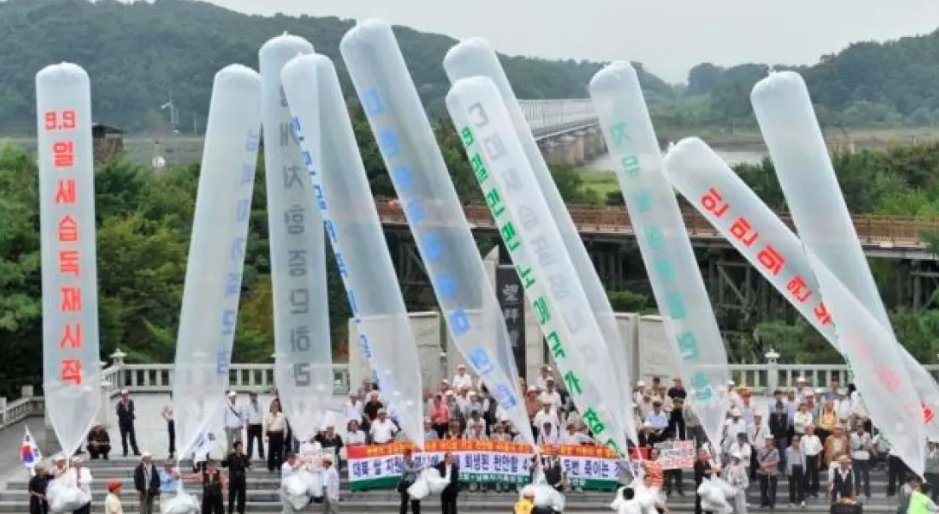In a bizarre and provocative move, North Korea has escalated tensions with its southern neighbor by launching a fleet of balloons filled with an unusual payload: trash, propaganda leaflets, and even excrement. The incident occurred on May 29, 2024, when hundreds of balloons floated over the heavily fortified Korean Demilitarized Zone (DMZ), which separates the two countries. While both North and South Korea have a history of using balloons to disseminate propaganda, this recent action has taken an unexpected turn.
The Balloon Barrage
South Koreans watched in astonishment as more than 260 balloons drifted across the border, carrying plastic bags filled with various items. These “gifts of sincerity,” as North Korean officials described them, contained a mix of trash, old batteries, propaganda leaflets, and, disturbingly, excrement. The balloons were released as a retaliatory response to ongoing propaganda campaigns by South Korean activists. These activists had been sending their own balloons filled with critical leaflets targeting North Korean leader Kim Jong Un, along with banned food, medicine, money, and USB drives loaded with South Korean music and K-dramas.

The Korean War’s Lingering Tensions
The Korean War officially lasted from 1950 to 1953, but a peace treaty was never signed, leaving the two nations technically still at war. For over 70 years, the conflict has remained in a state of uneasy truce, with sporadic incidents and heightened tensions. While direct armed conflict has not occurred since the 1950s, both sides continue to engage in psychological warfare and provocations.
North Korea’s Unconventional Tactics
North Korea’s decision to include excrement in the balloons is a particularly unorthodox move. The use of human waste as fertilizer is not new; in fact, the North Korean government has previously demanded that its citizens produce and deliver large quantities of feces daily to combat fertilizer shortages. However, launching balloons filled with trash and excrement across the border represents a new level of aggression.
South Korea’s Response
South Korean authorities responded swiftly, urging citizens not to touch the objects and to report any further incidents. Response teams were dispatched to identify the contents of the balloons, confirming the presence of fertilizers but ruling out human waste this time. Nonetheless, the incident has raised concerns about safety and the potential impact on the environment.
A Dangerous Provocation
Kim Yo Jong, sister of North Korean leader Kim Jong Un, criticized Seoul for condemning the North Korean balloons while its own citizens “cry for freedom of expression.” The South Korean military labeled the retaliation as “base and dangerous,” emphasizing the need for restraint and de-escalation. North Korea’s Vice Minister of Defense, Kim Kang Il, warned that “mounds of wastepaper and filth will soon be scattered over the border areas and the interior of the ROK,” highlighting the effort required to clean up the mess.













